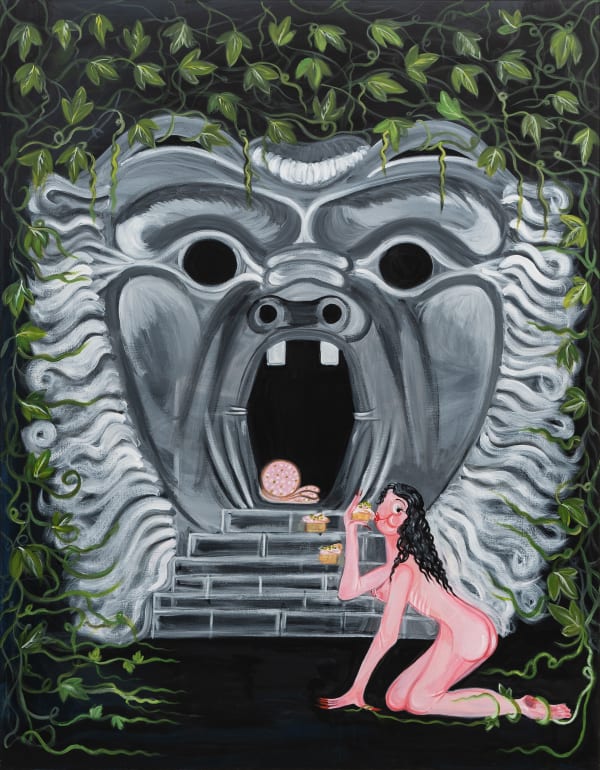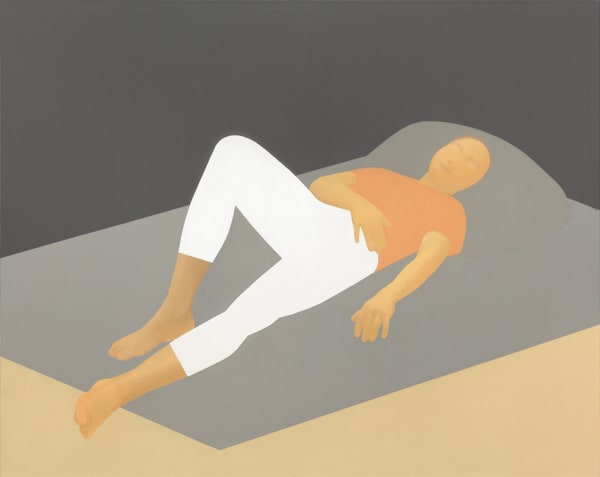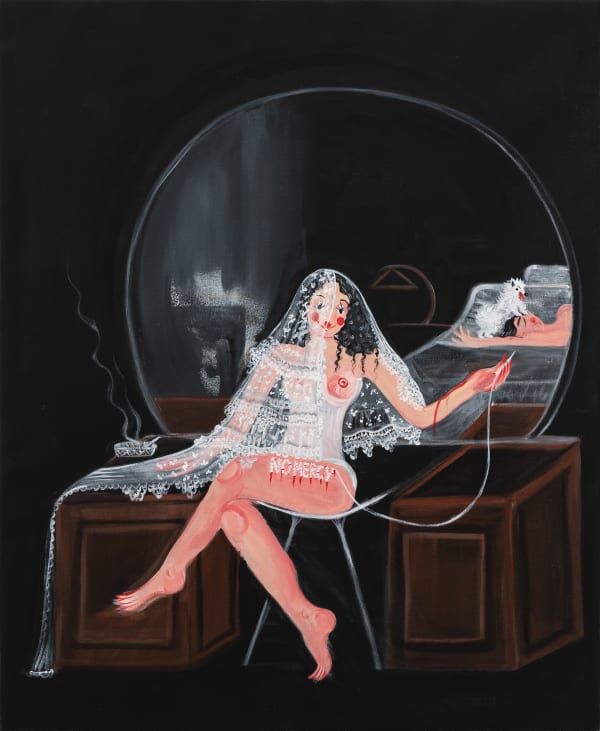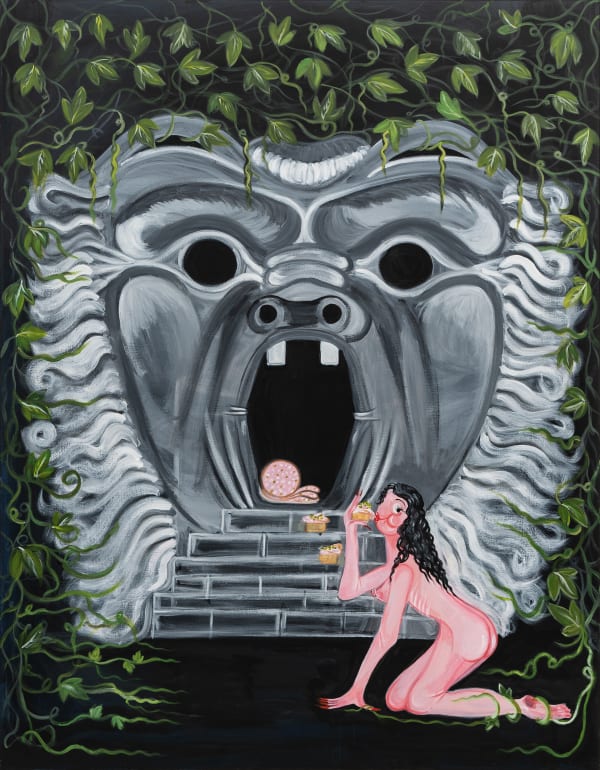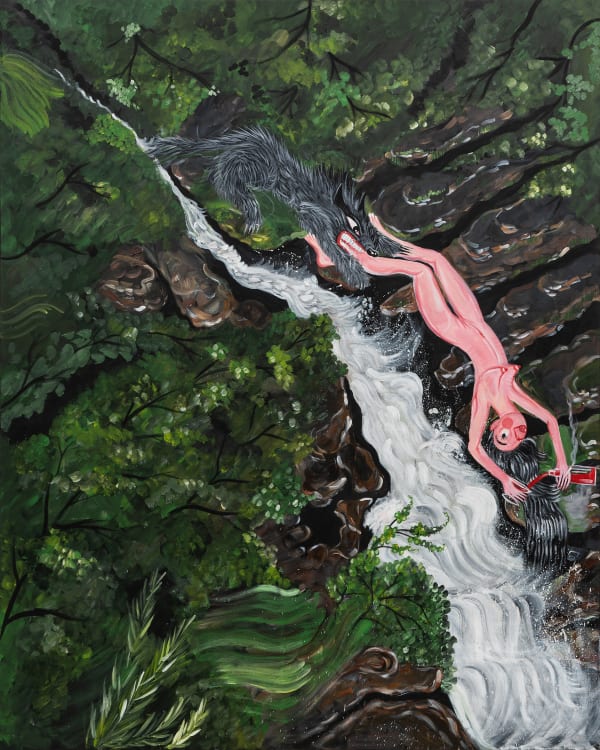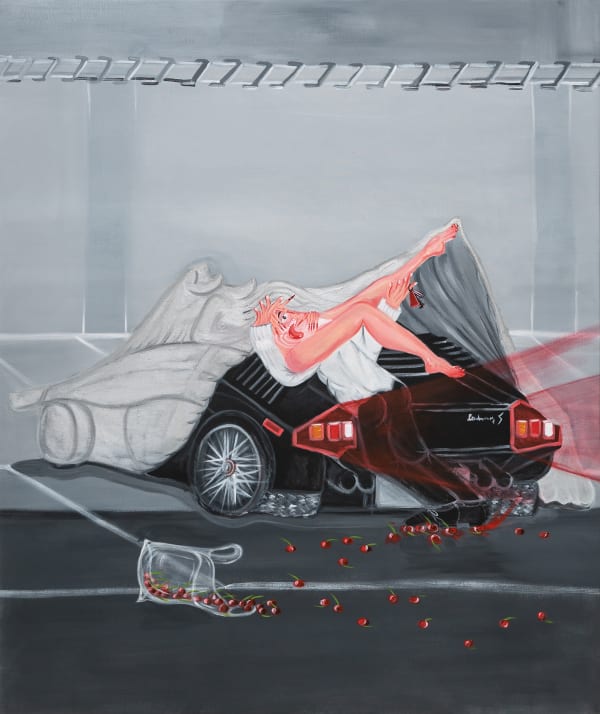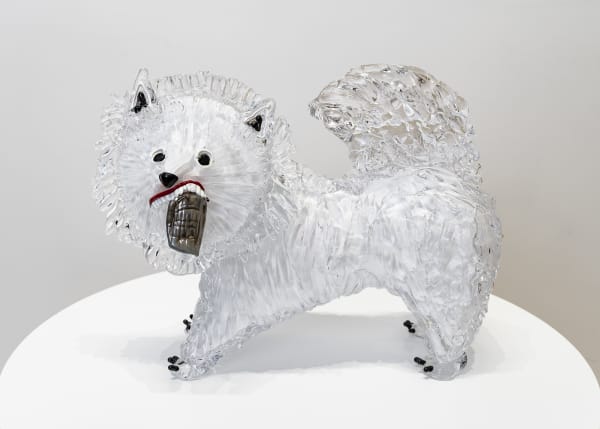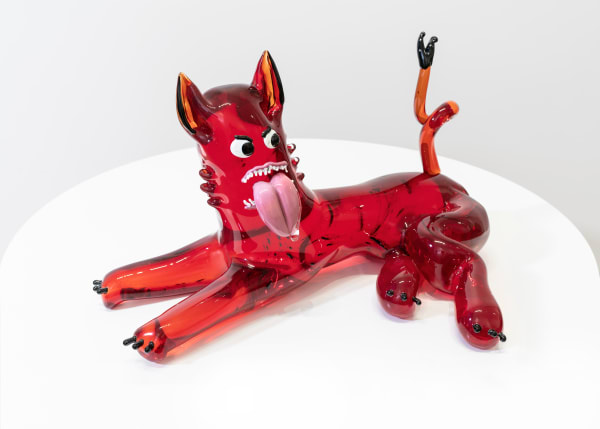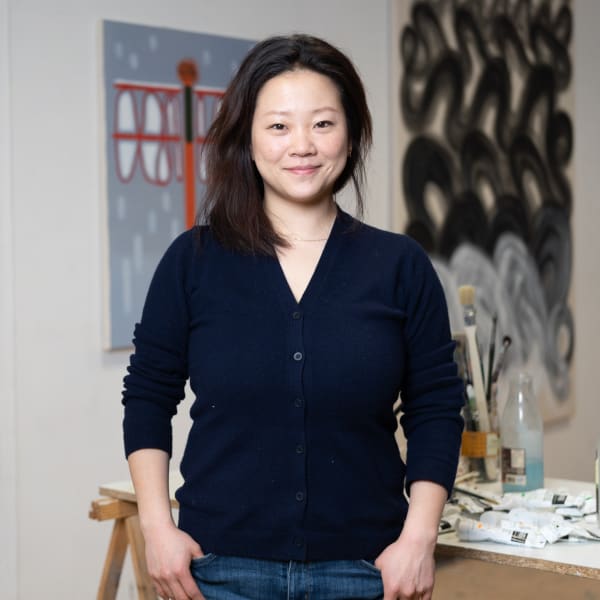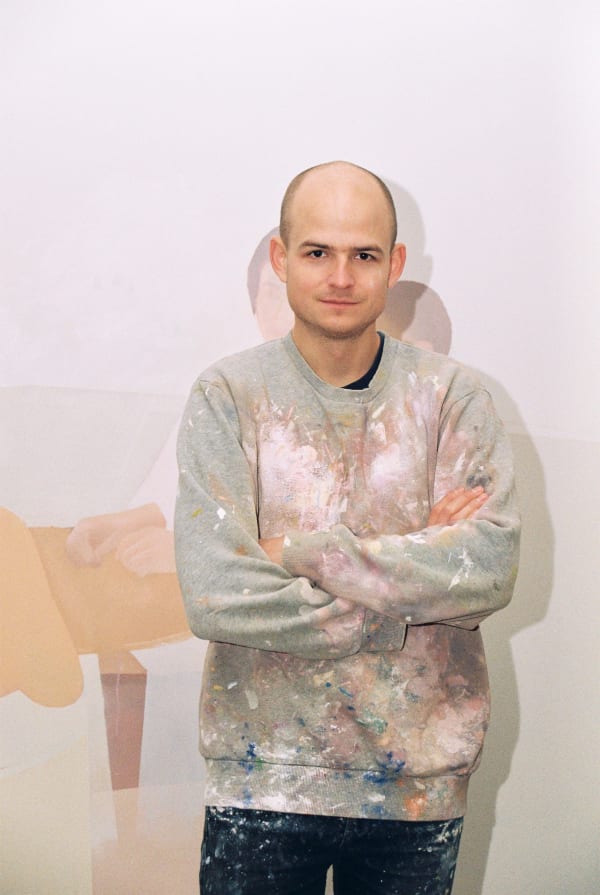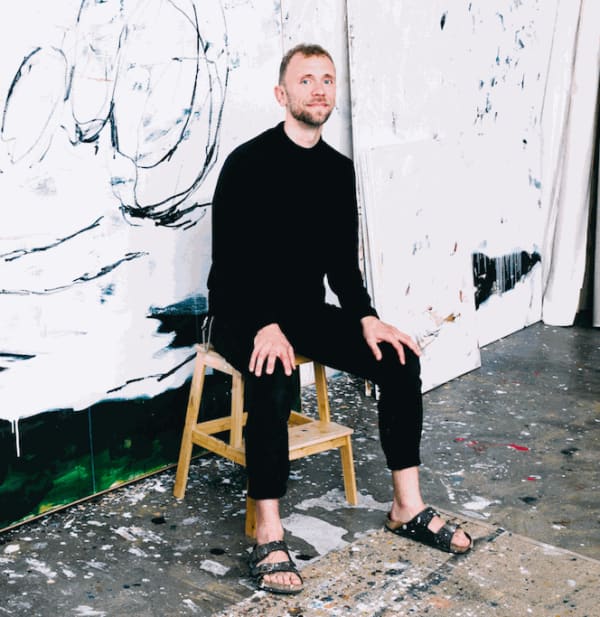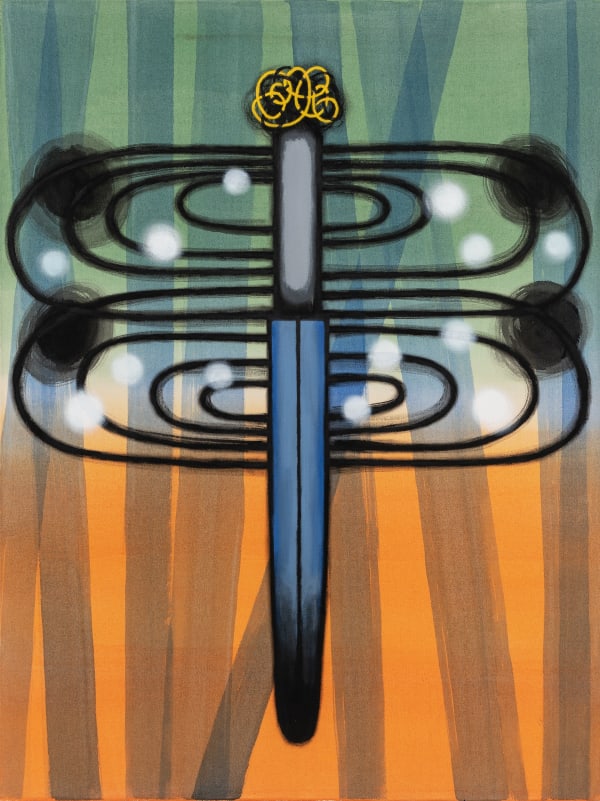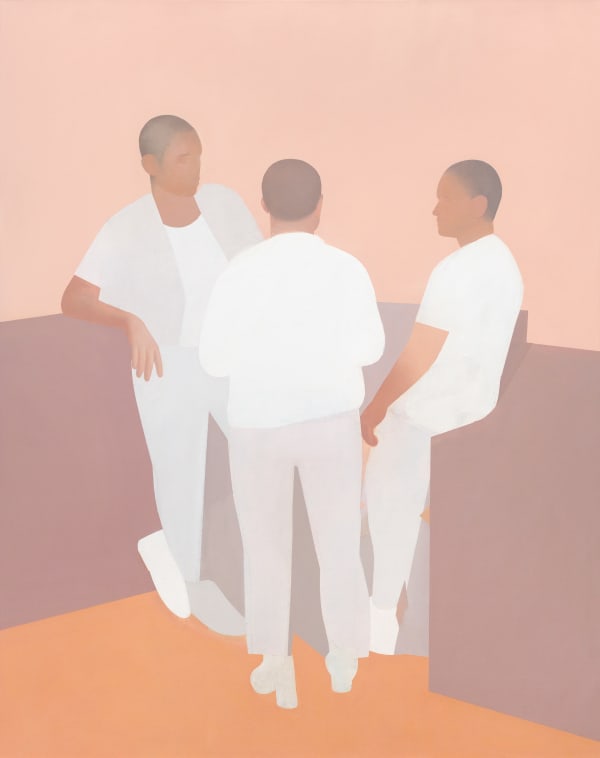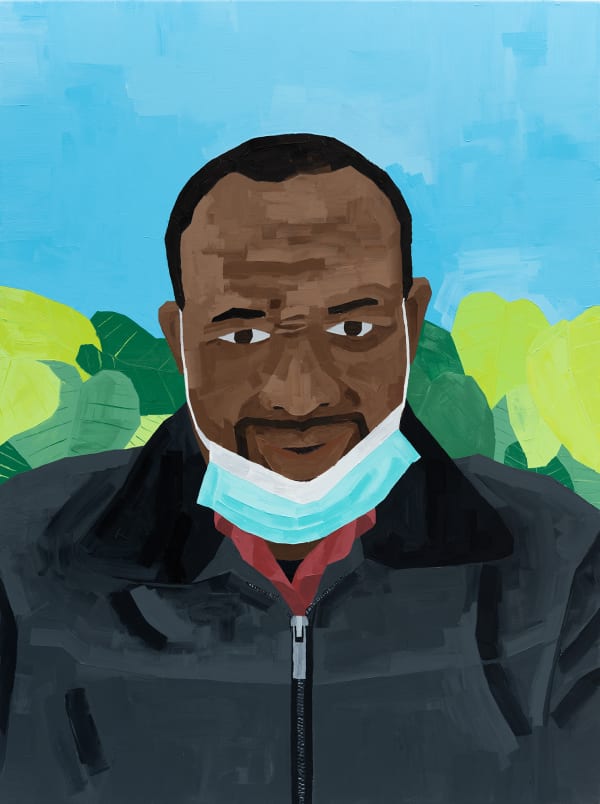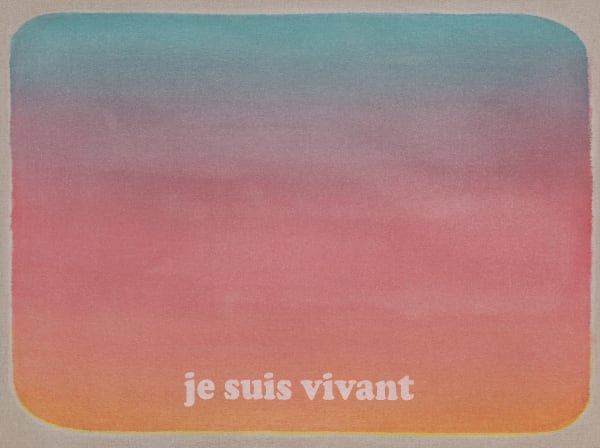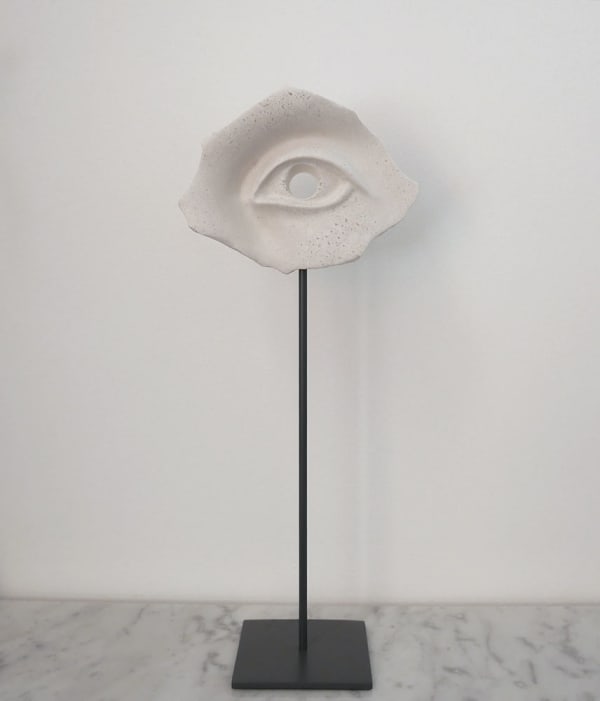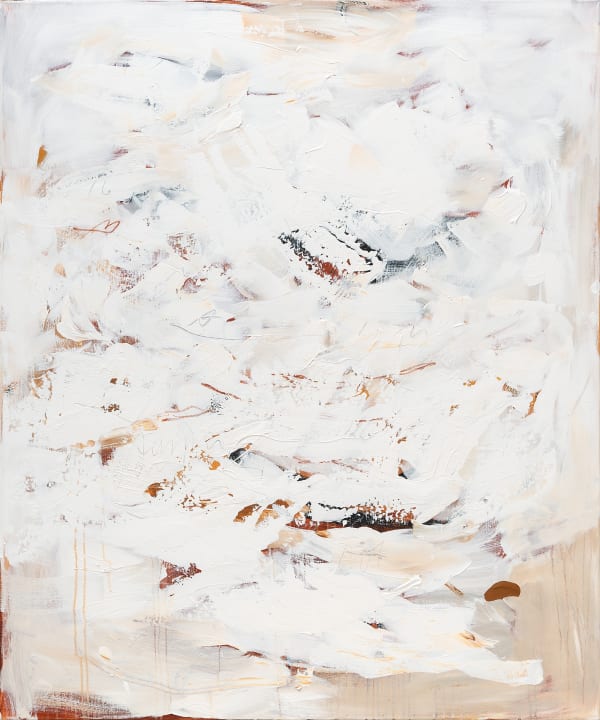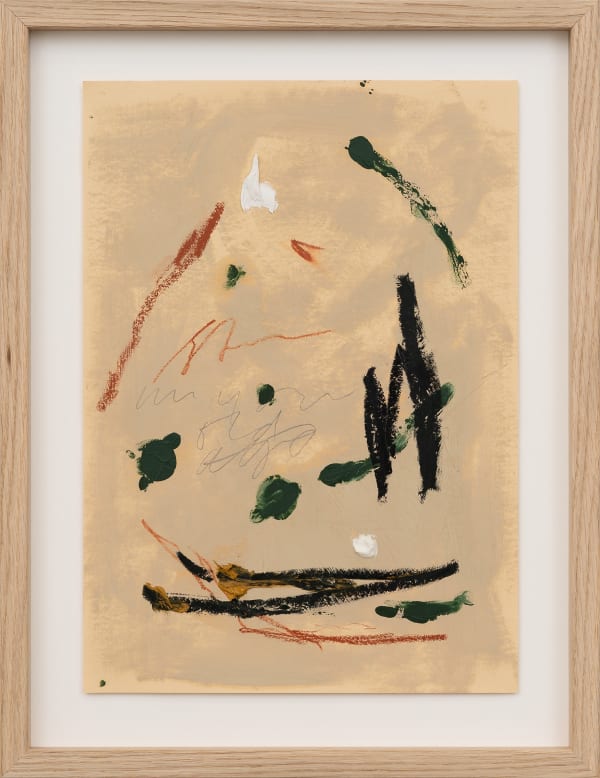-

Booth E7
6 – 10 April 2022
Grand Palais Ephémère
For its second year participating in Art Paris, Galerie Marguo is thrilled to present a solo booth of Polish-Thai artist Oh de Laval. Comprising six new paintings and two glass sculptures, this special presentation will showcase de Laval’s unique world of figurative art whose unpredictable and fun-loving qualities never shy away from the darker side of human existence.
In addition to Oh de Laval's solo presentation, a separate section of the fair booth will feature Marguo Salon, presenting a group of artists who have a shared interest in interrogating the roles that memory, place, affect and individual perception play in our contemporary, globalized lives. Marguo Salon will present new works by Soimadou Ibrahim, Laurent Pernot, Manuel Stehli and Steingrímur Gauti, while introducing for the first time a Dijon, France-based Korean artist Semine Yang.
VIP PREVIEW
Wednesday 6 April, 11 am – 9 pmThursady 7 April – Sunday 10 April, 10 am – 12 pm
PUBLIC
Thursday 7 April, 12 pm – 8 pm
Friday 8 April, 12 pm – 9 pm
Saturday 9 April, 12 pm – 8 pm
Sunday 10 April, 12 pm – 8 pm -
OH DE LAVAL SOLO PRESENTATION
-
There’s a psychological phenomenon dubbed “cute aggression” that refers to an urge to fatally squeeze or bite something one finds unbearably adorable. Instead, one may dig their nails into their palms while saying things like, “I could eat you”, through gritted teeth. Similarly, when in love and desiring such closeness, one might fantasize about climbing inside of the body of their partner and wearing their skin like a coat.
Scientists call this a “dimorphous” display of emotion, meaning that a positive emotion elicits a “negative” response, like crying from joy, or maybe wishing to smash one’s hands into the birthday cake of a friend as it is brought out to the table.
-

-
-
We typically (hopefully) resist these urges, letting their imagined sensations course back into our body, training it to understand them as cuteness, pleasure, and delight. Or, if we are Oh de Laval, we might paint these febrile scenarios, merging the ribald hedonism of the depicted figures with the saccharine opulence of gilded rooms, sports cars, champagne, and cotton candy clouds. The artifice of the latter, which the artist renders in a naive, graphical style, acts like a trojan horse to lay bare some of the most basic human impulses, desires, and urges. This calls to mind the original concept of catharsis (κάθαρσις) in Ancient Greek theater, which meant to purge the audience of negative emotions through art.
-
-
"I paint to taste life twice: in the moment and in the retrospection."
— Oh de Laval
-
-
The six new paintings presented at Art Paris are a distillation of the artist’s previous work, both formally and thematically. Featuring a reduced palette of green, red, black, and white, Oh de Laval has placed herself at the center of these mordantly expressionist compositions.
Consider I remember this; arriving home so early, all quiet and calm, head full of memories of wonderful night, 2022, in which a naked de Laval tries to pour a glass of wine, cigarette in hand, while being suspended above a rushing waterfall by a wolf who has sunken his teeth into her ankle, or Life doesn’t get any better than this, 2021, that depicts a man bent over the rear of his Lamborghini with his head buried between the legs of a woman draped in the car’s protective tarp – or is it the car itself that the man is getting off on? Gathered together, the works read like visual parables – succinct, didactic stories meant to illustrate an instructive lesson or principle – yet their morals are less clear, left for the viewer to decide.
-
-
Exhibited alongside the paintings are two blown-glass sculptures, the artist’s first foray into the medium, made in collaboration with Miranda Keys. Both the little demon and the white Maltese — presumably the same one featured violently shredding the bloody organ in My heart says yes but my dog says no, 2022 — are pulled directly from Oh de Laval’s pictorial universe.
Teeming with all forms of carnal pleasure and vice, the artist’s paintings prod at the viewer’s potential deep-seated fantasies or repulsions from the safe distance of a two-dimensional plane. Rendered in three-dimensional form, however, these devious little creatures stop existing as pure signs and confront the viewer with the potential horror of seeing one’s darkest impulses brought to light.
-

-
-
Exhibiting Artists
-
Semine Yang
-
Semine Yang’s (b.1985, South Korea) practice has been shaped by the natural world and our inextricable relationship to it. The artist’s recent paintings are the product of a more instantaneously, process-based, and overall holistic approach. The theme of metamorphosis, repetition and difference, is most prominent in Yang’s Dragonfly series, a formal meditation on the fundamentals of painting. In the monochromatic painting Doodle Waves III, the cyclicality of time is expressed gesturally. Inspired by the ebb and flow of a roiling ocean, and the force of energy that builds and crashes in waves, the artist seeks to track this motion in a single line.
-

-
Manuel Stehli’s (b.1988, Switzerland) paintings hover somewhere in the space between outside and inside, specific and general, real and unreal. His life-size portraits of standing and lounging figures depict familiar scenes of casual contact that feel warm and intimate, yet simultaneously muted. The mysterious air of these portraits, as with the vibrant ficus plants, landscapes, or the gingerly positioned compositions of hands, is in part due to their meticulously defined volumes and lines that paradoxically seem to only enhance their elusive, generic quality.
-
-
Soimadou Ibrahim
-
Soimadou Ibrahim’s (b.1989, France) portraits mine the potency of familial and community ties to explore the disjunctions of distance and displacement and the effects these can have on one’s sense of identity. Centering the artist’s family and close friends, Ibrahim’s portraits – rendered in broad, expressive strokes and vibrant colors – are drawn from memory and an archive of family photos. Through the application of heavy layers of paint, Ibrahim strives to materially manifest the spirit of his kin, while also reckoning with the distance between himself and daily life in Itsinkoudi, a remote village in the Comoros Islands off the east coast of Africa, where the artist lived until the age of 9 and much of his family still resides.
-
-
Laurent Pernot
-
Laurent Pernot (b.1980, France) has developed a polymorphous practice that explores human nature through the experience of time and memory. Contemplative and universal, discreet or sometimes spectacular, his artworks allude to a sense of timelessness through intricacies between the past, the contemporary and the future. His research draws as much from history and philosophy as from references to literature and poetry. The interactions between man and nature, memory and oblivion, the ephemeral and the eternal, or more recently human history and love, are among his major themes.
-
-
Steingrímur Gauti
-
Steingrímur Gauti’s (b.1986, Iceland) gestural acrylic and mixed-media abstractions are inspired in turn by twentieth century art history and more ancient philosophies of Zen Buddhism. Gauti’s process reflects an ongoing meditation in motion in which he works continuously with whatever pigments are available at hand, striving toward the uninhibited painterly expression of his internal state, that is lyrical yet devoid of formal preconceptions. Gauti’s canvases, while inevitably imbued with the layers of time, are contemplative exercises in surrendering to its inevitable passage.
-
-
-
-
6 – 10 April, Grand Palais Ephémère, Booth E7
Subscribe Newsletter
Be the first to know about new exhibitions, artist updates, as well as books and more. Sign up for our newsletter below.

